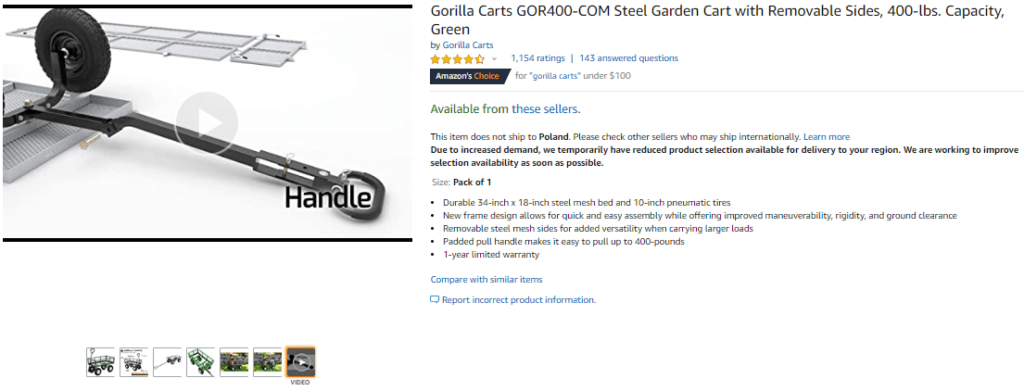3 Tips to Improve Your E-Commerce Product Management
Last year, Statista made a report on the growth of digital buyer penetration.
According to the report, around 65% of internet users will be making their purchases from e-commerce stores this year, and this percentage will increase to 65.2% in 2021.

However, the COVID-19 pandemic has definitely made changes to the current state of e-commerce.
Panic and shortage of certain products in brick and mortar stores have forced people to go online and order goods from e-commerce shops.
Visual Capitalist reports that the demand for goods like disposable gloves, bread machines, cough medicine, and packaged foods has increased by over 600%. And, according to this source, Amazon announced it could no longer keep up with the consumer demand.
The growing interest of the public worldwide in purchasing goods online is caused by the demand created by the current pandemic. The current worldwide quarantine, thus, creates more competition for e-commerce stores.
As a result, this creates the demand for online retailers to improve their product management strategy in order to have their products noticed and purchased.
What is Product Management in E-Commerce?
Product management in e-commerce presupposes the organization strategy that includes planning, developing, and testing, as well as launching and delivering products—the same as with brick and mortar stores.
The goal of product management in e-commerce is also similar to brick-and-mortar stores—maximization of revenues, product marketing, etc.
So, what makes product management in e-commerce different?
It all starts with the choice of an online marketplace—a system that will support the store’s retailing and marketing efforts.
E-commerce product marketer’s main responsibility is to manage an online brand according to the demands of the e-commerce market and to set the product management strategy that will retain existing customers and encourage more people to shop for the product online.
As a result, product management in e-commerce consists of three main areas:
- Merchandise management—ensuring the delivery of a high-quality product by testing, customer and market research, and communication with vendors.
- Consumer technology—creating a friendly user interface for buyers using an e-commerce store’s app or website. This area also involves product marketing.
- Non-consumer technology—this area involved infrastructure management, payment operations, logistics, etc.
Every e-commerce store usually has these three areas well-covered to deliver high-quality products and ensure customer satisfaction.
However, taking into account the current situation, even with massive online retailers like Amazon being pushed over the edge, your e-commerce store needs to make some adjustments.
Let’s see how you can improve your e-commerce product management strategy.
1. Centralize Product Information Management
Product information management (PIM) involves using a certain strategy to manipulate information used to market and sell an e-commerce product through distribution channels.
Managing product information usually involves using a marketplace management system. You may manage your e-commerce store without it, but it may cost you your e-commerce business.
Why is investing in a comprehensive product information management system worth it?
- With a product information management system, you can manage multiple locations easier in terms of logistics, customer support, etc.
- PIM systems are often multilingual, which helps online retailers manage multilingual data such as requests from customers, messages, and overall communication, including vendors from a different location.
- These systems allow users to create a centralized catalog, where they can add and modify product information.
When do you know it’s time to invest in a product information management system?
- you’re shipping a high volume of products
- you need to handle a high volume of customer information
- you have a big range of products
In the current situation, all the three above-mentioned points can put a strain on your e-commerce business. So, investing in a PIM system can improve product management, reduce management costs and risks, and protect sensitive data that you receive from your customers.
2. Review Your E-Commerce Product Pages
If you want to increase the visibility of your products, it is important to through your product listings to see how the products are presented to the customers.
When reviewing the product pages on your e-commerce website, pay attention to the following:
Your visuals. The images of the products should be persuasive and show the product from different angles to make the shapes and colors appear clear and realistic. Also, reportedly, 22% of product returns happen because a product looks different in person. That is why make sure your product visuals demonstrate a product in use. You can upload a video for a better product demonstration as well.

Product offers. Make sure that you optimize your product listings to make them more personalized based on previous searches:

Discounts. Right now, when shopping online, people are looking for the best deals. Make sure that the first products that appear in their search are those with discounts and special offers.

Keep in mind that your product listings may also appear on proxy websites as well as in Google search, websites with reviews of companies, as well as on Google search if your e-commerce business is using Google Ads.
It is also important to check the SEO optimization of your product descriptions to make sure they appear on the top of Google search results.
3. Include Customer Q&A Page
You know about the power of word-of-mouth. Reportedly, 92% of people believe product suggestions from their friends and family more than advertising.
That is why, even if you invest in Google Ads or social media advertising, you still need a space on your product pages, where customers can leave not only their reviews but also ask product-related questions.
Amazon has a similar feature, where customers ask an e-commerce retailer product-related questions, and these questions and answers can be ranked according to their relatability.

Your e-commerce brand can benefit from a Q&A page in many different ways:
- Improved user experience. A Q&A page allows customers to access more practical information regarding a product in one place.
- Saving expenses on customer service. Customers can use a Q&A page to navigate frequently asked questions to get the answer to their inquiry tight away. This means that your customer support will receive fewer tickets with repeated questions.
- Improved SEO optimization. Q&A pages often contain internal links to other pages on the website to provide users with more information about the product, which also benefits your SEO strategy.
Having a Q&A page can have a positive effect on your sales. As more people show interest in your product by asking questions about it, it is a motivation factor for other customers to explore and purchase your product.
In the current situation with the pandemic, with more people shopping online, you want to give them an opportunity to access more information about your product to help them make the right purchase decision.
Moreover, having a Q&A page shows that you are open to communication with customers, which puts you above all your competitors, who don’t offer that to their customers.
Wrapping Up
With the growing demand for online shopping and growing competition among e-commerce businesses, you definitely need to up your game with your e-commerce product management.
If you want to get your product noticed, it is important to use a comprehensive PIM system that will allow you to manage all the operations related to your e-commerce business through one channel.
Apart from that, it is also important to review how your product is presented on your website to make sure that customers get a full product demonstration. And you should also give the customers an opportunity to communicate with you and ask product-related questions.
Hopefully, our tips will improve your e-commerce product management strategy and help your e-commerce business stay competitive in the times of the pandemic.
Has your e-commerce business gone through any hardships related to the current COVID-19 situation?
Please, share your experience with us in the comments below!
About the author:
Daniela McVicker is a passionate digital marketer. Daniela is interested in everything related to SEO and blogging. She collaborates with many authoritative websites where she shares her experience and helps marketers make their names in the online world. You can check her last review of Grabmyessay.
Yan Anderson is the Head of Content Marketing at CS-Cart with over 10 years of experience in the eCommerce industry. He's passionate about explaining complicated things in simple terms. Yan has expertise in building, running and growing eCommerce marketplaces. He loves to educate people about best practices, new technologies, and trends in the global eCommerce industry.

